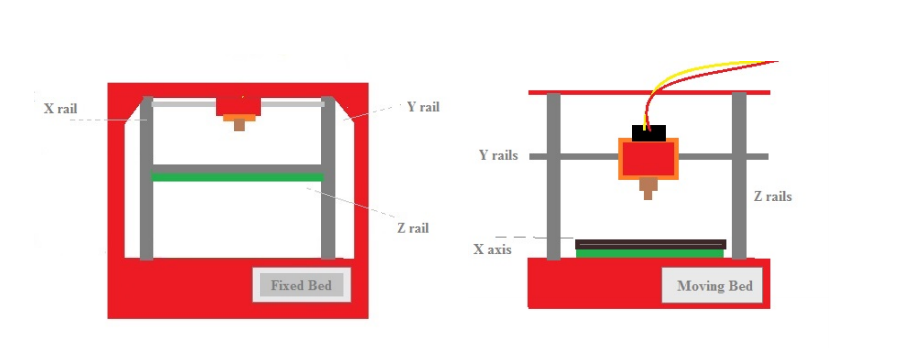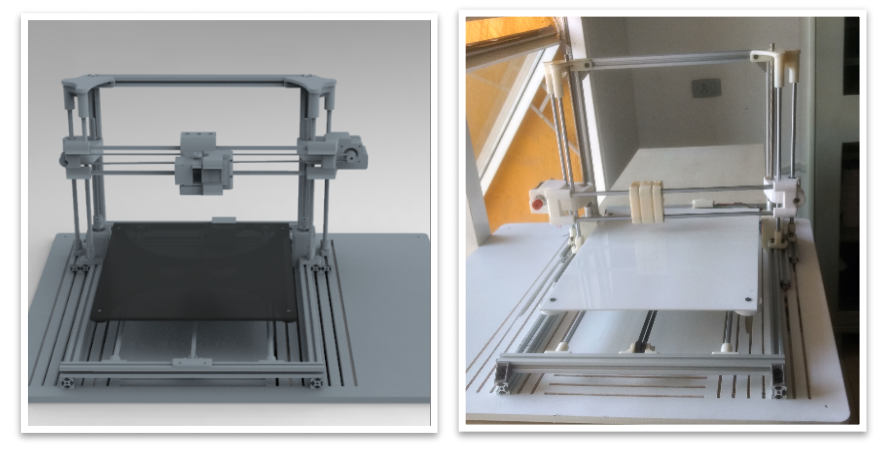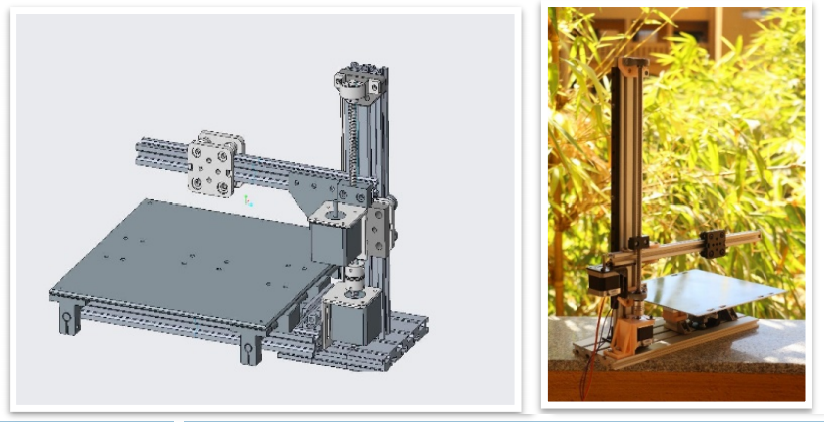In the recently published ‘Vibration Analysis of Cantilever Shaped 3D Printers,’ researchers A. Srivastava, C. Gautam, N. Bhan, and Ram Dayal discuss how to improve 3D printing hardware further, as users’ needs continue to evolve. Focusing on the range of technology available—and varied accessibility and affordability—the authors endeavor to refine capabilities further using vibration techniques, expecting their study to affect the RepRap open-source community in a positive way.
Much 3D printing research has been centered around FDM 3D printing and ways to improve both mechanical and surface properties. In this study, the researchers are also exploring quality in performance due to better mechanical properties, but also how vibration during 3D printing can cause defects. While the 3D printer employed may seem sturdy and capable, stability may be an issue during the actual process. As layers are being fabricated, vibrations may affect surface quality significantly. The researchers recognize that this is an ‘inherent’ problem and one that has not received enough study so far.
“Although, many post processing methods have been developed to change the outlook of the final product in variety of ways, these layers give many users a good deterministic factor of the quality of 3DP. As a thumb rule, when the layers are big, irregular & wavy, the final product diverts from delivering the best quality. When the layers are hardly visible, or the texture of the final product, such as curves or depressions, are clear, the final product is good quality, even though some of the layers would still be visible,” state the researchers.
The team decided to evaluate a 3D printer that would be created from the beginning to ‘the point of perfection,’ with vibrations to be measured according to the axis which moves the most and can carry the most weight. Vibrations must be measured according to the extruder, not the build plate. One of the benefits of developing their own hardware for this project was that the researchers had the luxury of taking the time to experiment with as many different options as desired for optimizing performance and affordability too (with a price point of $250 suggested).
The research team ran into initial problems such as constraints on printer motion, lack of repeatability, lack of surface quality, and more. They were forced to resign that first printer to prototype status, moving on to their next iteration with the cantilever structure.
Once the cantilever design was perfected, the team began analyzing the project overall, along with quality of their product. They also received continued input from enthusiasts around the globe, using the printer in ‘unimaginable ways.’
“A large database of vibrational data regarding the 3DP could potentially be used to tune a 3D printer for optimum quality like a guitar tuner, which also utilizes frequency analysis. Furthermore, an embedded sensor could also be used to enable artificial intelligence in 3DP,” concluded the researchers. “The sensor may detect the vibrations, or the curves which would cause abnormally high vibrations, and adjust the G-code online to produce a better quality without using much resources. The box structure suffers from vibration for one simple reason. Since the whole assembly is directly, or indirectly joined to a host cover, the vibrational currents travel throughout, and end up near extruder nozzle which may cause small, but defects nonetheless.
“In the future, the manufacturing industry would not completely circle around additive manufacturing technique, as stated by our hyped social media, but tuned towards having to embed it into its larger established matrix, and, most probably, a hybrid technique of subtractive and additive manufacturing would come forth.”
While manufacturers seem to be coming out of the woodwork from every direction with new 3D printers, researchers create much of their own hardware for better experimentation, and ultimately, innovation too—from creating new controlling systems to bioprinting to making printers for infrastructure repair.
What do you think of this news? Let us know your thoughts! Join the discussion of this and other 3D printing topics at 3DPrintBoard.com.
[Source / Images: ‘Vibration Analysis of Cantilever Shaped 3D Printers’]
Subscribe to Our Email Newsletter
Stay up-to-date on all the latest news from the 3D printing industry and receive information and offers from third party vendors.
Print Services
Upload your 3D Models and get them printed quickly and efficiently.
You May Also Like
Johns Hopkins University Researchers Develop HyFAM Technology
Two scientists from Johns Hopkins University, Nathan C. Brown and Jochen Mueller, have developed a hybrid manufacturing technology they call HyFam, or Hybrid Formative Additive Manufacturing. Their work on this technology...
3D Printing G-Code Gets an Upgrade: T-Code
Good old G-Code still manages many 3D printers, great and small. Just like the STL, it’s a standard that enables collaboration while also holding the additive manufacturing (AM) industry back....
AM Rewind: The Biggest News and Trends of 2024
After a sluggish 2023, driven by persistent inflation and geopolitical tensions, 2024 has seen some recovery. Economic growth climbed from about 2.8 percent in 2023 to a modest 3.2 percent...
Metal Wire 3D Printer OEM ValCUN Announces Plans for 2025 Expansion
ValCUN, a Belgian original equipment manufacturer (OEM) of wire-based metal additive manufacturing (AM) hardware, has announced that the company has entered the next phase of its growth trajectory, making key...





































